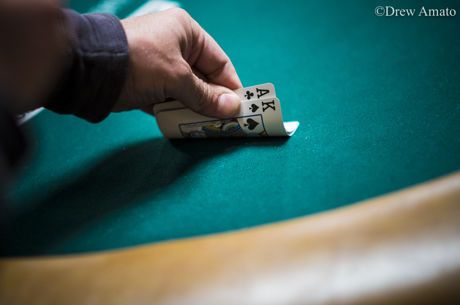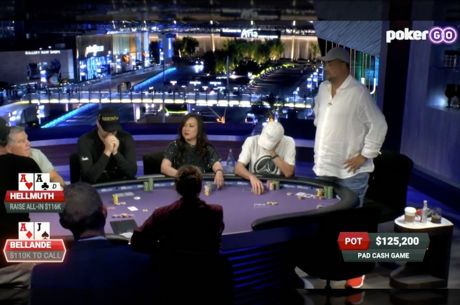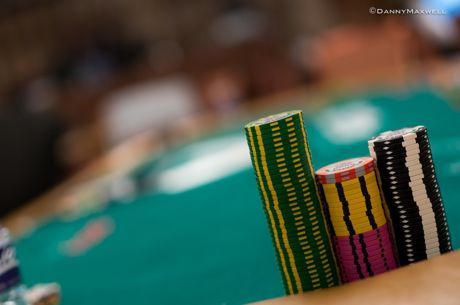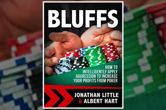Learning When to Bluff With Nothing
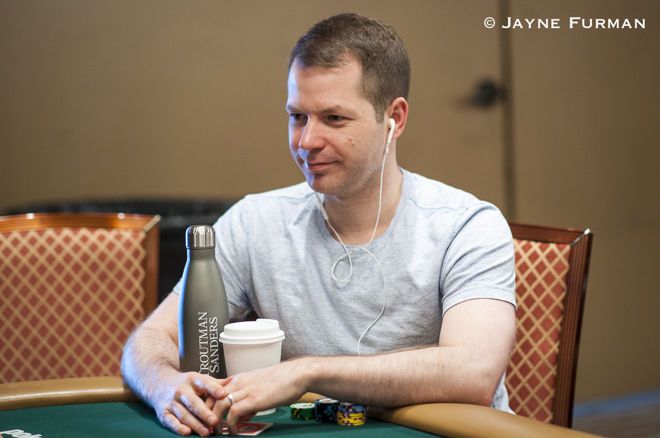
This week's tournament hand features me raising the button with a not-so-strong hand and then bluffing with it on multiple streets after I miss the flop and turn. It provides a good opportunity to discuss when it makes sense to bluff with nothing (or very little).
The blinds were 150/300 with a 50 ante, and I had about 15,000 to start the hand, meaning I was about 50 big blinds deep, a little shallower than has been the case with many of the hands I've been reviewing.
It folded to me on the button where I raised ot 800 with J?10? and the big blind called. The flop came K?7?3? and my opponent checked.
This situation was similar to one I covered in a video two weeks ago (although in that case I had ace-king on a king-high flop). With such a dry flop that hits my range much better than my opponent, I prefer to bet small and did so here, betting 800. The big blind called.
The turn was the 8? and the big blind checked again. Here my betting range tightens up somewhat, including my strong hands as well as draws with no showdown value if they don't get there of which my J?10? is an example.
All of this adds up to a good spot for me to continue bluffing. Take a look and hear my discussion of why that is, see what bet size I chose, and find out what happened after I did bluff again:
Here I didn't get the chance to fire a third barrel as my opponent check-raised me out of the hand. But by going back over the situation I can at least rest assured my turn bluff was a good one, even if it didn't work this time.
Jonathan Little is a professional poker player and author with over $6,700,000 in live tournament earnings. He writes a weekly educational blog and hosts a podcast at JonathanLittlePoker.com. You can follow him on Twitter @JonathanLittle.

